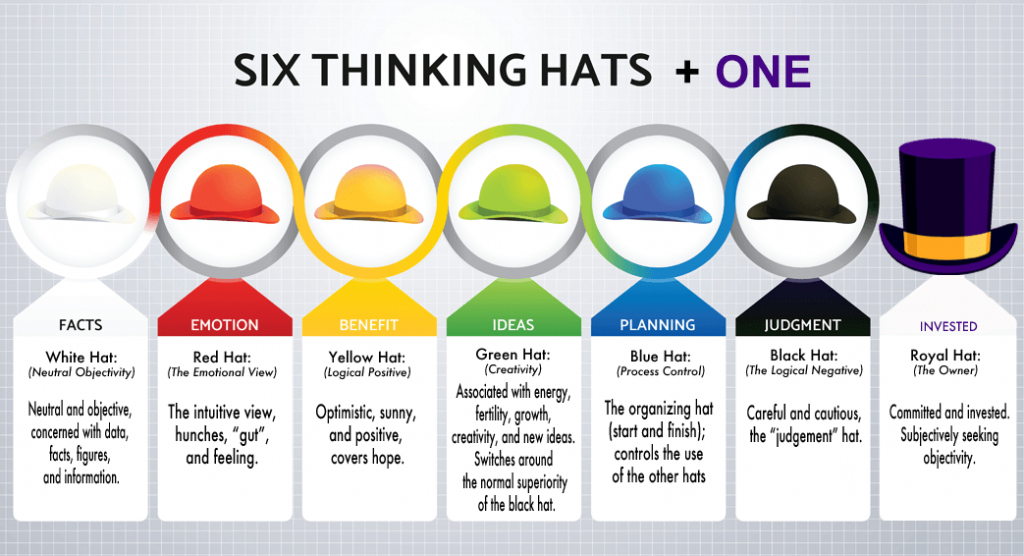
Using Edward DeBono’s Six Thinking Hats, I felt it necessary to look at the problems laterally before moving on to possible solutions. These points will inform a brief that clearly defines the challenges based on the insights gained from my critical report as well as those from the research above.
I also want to establish a clear goal and purpose to this project where a problem is identified and solutions are posed.
Facts –
Place identity is hard to identify
Collective convergences reveal this identity
History plays an important part
People will only engage if getting something in return
Data is valuable
Optimism –
People will want to engage to inform a better understanding of place identity
People want to be part of the identity
People like to go to places with strong, understood place identities
This will work!
Risk and Problems –
Physical installation risks being vandalised
Communities won’t engage
Where will data be stored?
How will installation be impartial and not influence input
Negativity might not want to be acknowledged
Feelings –
Sentimemt in Great Yarmouth is relatively positive at this time.
Time of year will impact heavily on the success of project
People of Great Yarmouth can be negative
People need motivation
Creativity –
Designs need to be neutral to avoid influence
Use of interesting and engaging public installation will increase conversations and interest
Can the solution exist on an online platform?
Other outcomes
Thinking –
Need a mixture between residents and tourist
What passive data can be collected?
How can technology be utilised?
Can the data inform a variety of outcomes?
Which locations?
The Redfined Brief

Strong identities create strong communities. Whilst Great Yarmouth has a well established idenity, it is constantly in a fluid state and is therefore continually changing. The brief for this project is to create a solution which confirms Great Yarmouth’s identity by seeking the views of those who live, work and visit the destination.
Following on from the research carried out in the critical report ‘Hidden in Plain Sight’, the project must make use of both key terms – ‘Collective Convergences’ and ‘Drop Spots’ – to highlight what aspects of Great Yarmouth are important to it’s identity.
Once a means has been developed to obtain data from the public, possible solutions should be developed as to how the information should be displayed and used to strengthen Great Yarmouth’s identity and the many communities who enjoy it.

Leave a Reply